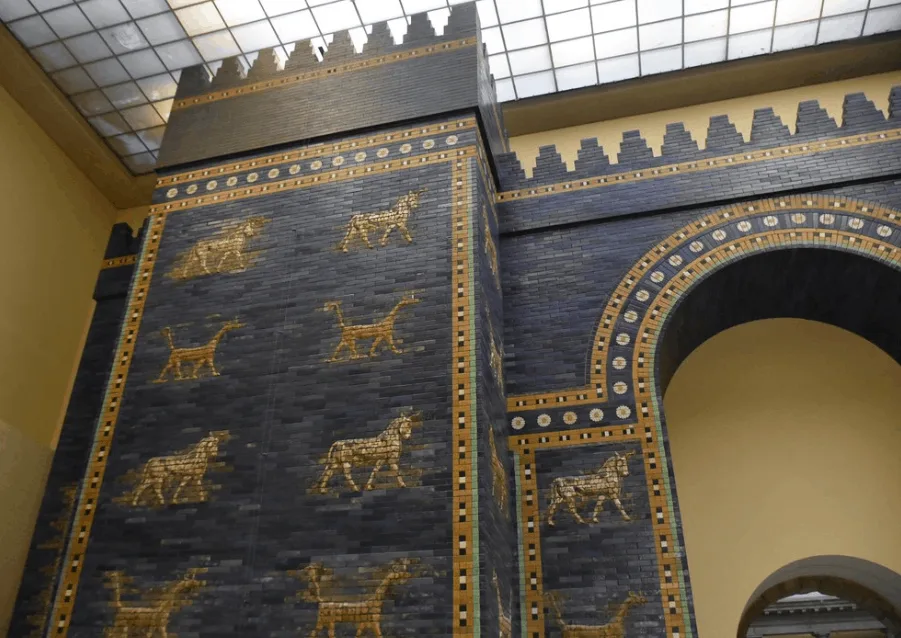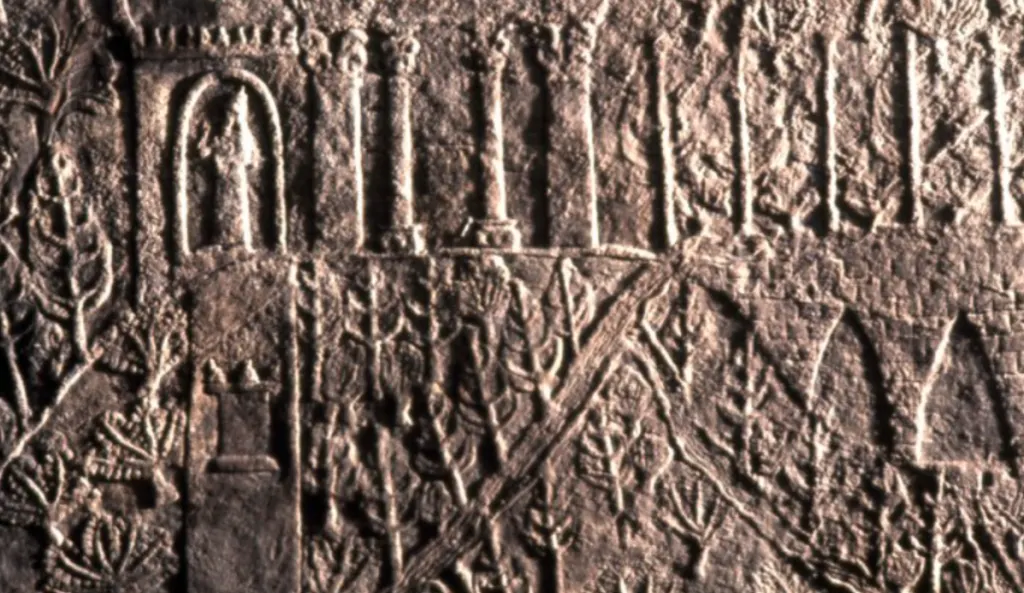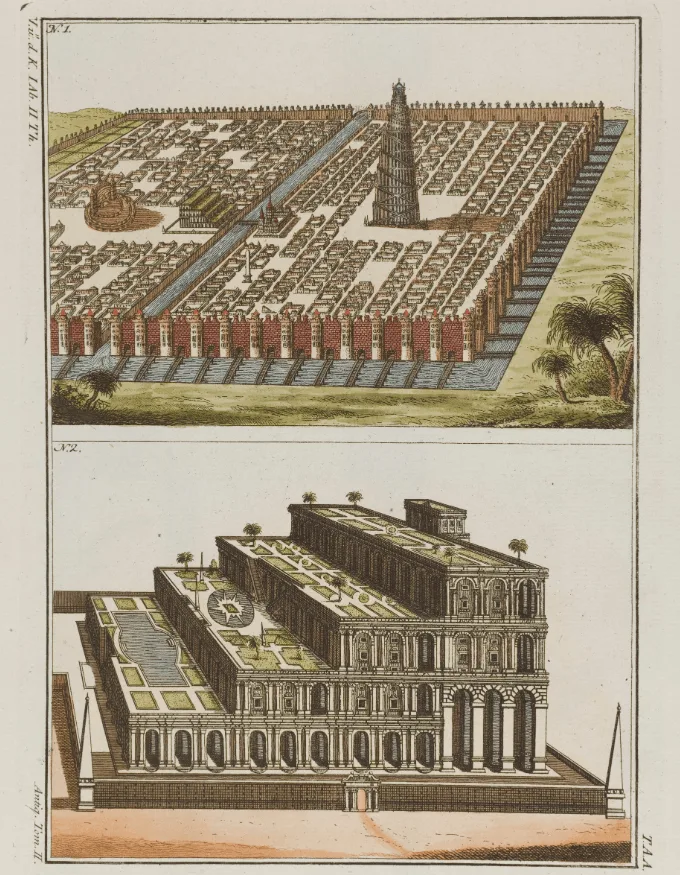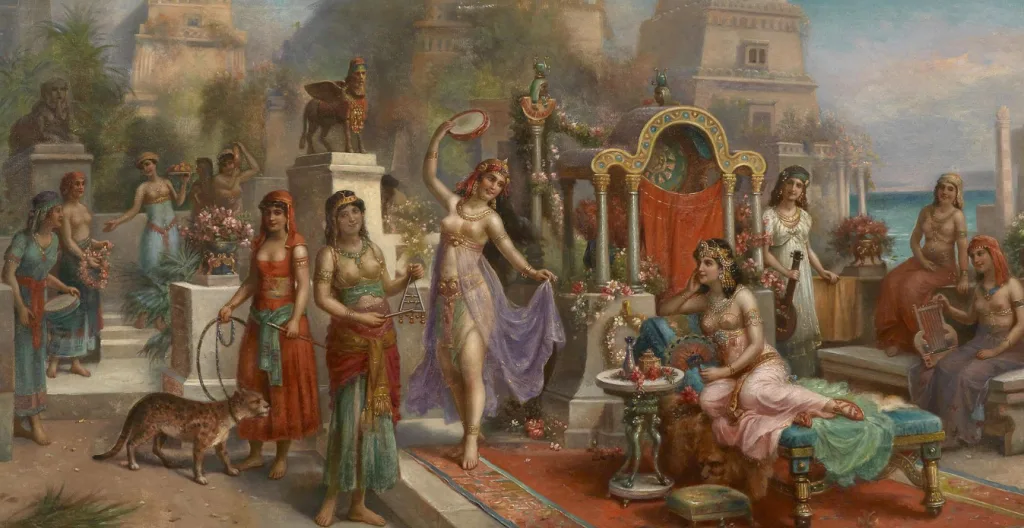One of the most amazing features of the ancient city of Babylon was a series of gardens. Mesopotamia is a historical region that is rich in culture. It is here that the ancient city of Babylon turned into a city-state and later into a powerful kingdom.
The hanging gardens of Babylon are considered to be one of the 7 wonders of the ancient world and are the only one of which the location and even existence can be proven, even though it’s believed it was located in modern-day Iraq.
There are numerous descriptions and mentions throughout history about why and by whom this feat of Mesopotamian architecture was built. So in this post, we’ll present you with the ultimate list of facts about the hanging gardens of Babylon.
1. What are the hanging gardens of Babylon?
The city of Babylon was located near the city of Hillah in the Babil province of current-day Iraq.
In this ancient city, there was a palace referred to as “The Marvel of Mankind.” It has been described that alongside this massive palace, tiered gardens were constructed that contained a variety of trees, bushes, and vines.
because of the way the gardens were positioned, it gave the impression that the Palace was sitting on top of a green mountain, while in fact, it was nothing but a garden consisting of mud bricks.

2. Who built the hanging gardens of Babylon?
The most popular version is that the most powerful and longest-reigning monarch of the Neo-Babylonian empire built the hanging gardens of Babylon.
His name was Nebuchadnezzar II and he reigned over the empire from 605 until 562 B.C. This means that if the story is correct, the hanging gardens of Babylon would have been built in this period.
The Bible doesn’t have any good stories about him. It refers to Nebuchadnezzar II regarding:
- His conquest of Judah.
- The destroyer of Solomon’s Temple.
- The initiator of the Babylonian captivity in which numerous Jewish people were held captive in Babylon.
Nevertheless, regardless of his track record, he is believed to be responsible for one of the 7 wonders of the ancient world.

3. Why were the hanging gardens of Babylon built?
Again, we are going with the most popular story regarding why the hanging gardens of Babylon were constructed.
The story mentions that King Nebuchadnezzar II had a wife named Queen “Amytis” who was born and raised in Media, which is situated in Modern-day Iran.
She felt homesick in Babylon and missed the green hills she was used to in her place when growing up.
So for the love of his wife and to make her feel better, Nebuchadnezzar II built the hanging gardens alongside his palace.

4. Other theory of who built the hanging gardens of Babylon
While it’s generally accepted that Nebuchadnezzar II built the gardens for his wife, there is another theory.
This theory conceived by Stephanie Dalley, a British Ancient East expert, proposes that the gardens were built by the Assyrian King Sennacherib for his palace at Nineveh.
The arguments made are that Babylon, which literally translates to “Gates of the Gods” can refer to multiple cities in Mesopotamia and that there is actual evidence of an existing canal system that could provide the gardens at Nineveh with water.
Finally, there are also some inscriptions and wall reliefs mentioning and even depicting the gardens at Nineveh.
Are these the Hanging Gardens of Babylon or simply the gardens of Nineveh?
Without more conclusive evidence, the question will, unfortunately, remain an open one.

5. Did the Hanging Gardens of Babylon even exist?
Altogether there are only 5 written mentions of the Hanging Gardens of Babylon which are available today.
Here’s an overview:
Josephus – A Roman-Judea historian who was the first to make mention of the gardens in 290 B.C. He is the only one who claims Nebuchadnezzar II built the gardens, but then again, he got his information directly from a Babylonian priest named Berossus.
Diodorus Siculus – Ancient Greek historian who ascribed the gardens to a Syrian king and that the gardens were irrigated by the Euphrates River.
Quintus Curtius Rufus – A Roman historian who got his information from Diodorus, but added that the gardens were located on top of a citadel.
Strabo – A Greek geographer and historian who mentioned the irrigation system used an Archimedes’ screw which would have made it possible for water to be pumped up to water the top tiers of the gardens.
Philo of Byzantium – Confirms the writings of Strabo about the ancient water pump system and praises its ingenuity.
While there aren’t numerous sources, there are still enough sources to believe that the gardens did in fact exist.

More facts about the hanging gardens of Babylon
6. The word is derived from the Greek word “kremastós” which literally means “overhanging.” This has a broader meaning than just hanging and would refer to a garden that is elevated with its plants and trees overhanging the terraces they grew on.
7. There isn’t any reference to Nebuchadnezzar II having a Median wife named Amytis. Historians, however, concluded that this is very likely as strategical marriages with neighboring kingdoms or empires were quite common. This would support the theory that his Median wife was homesick and the gardens were constructed for her.
8. The city of Babylon was one of the marvels of the ancient world and was far ahead of its time. Greek historian “Herodotus,” wrote in 450 B.C. that “Babylon surpasses in splendor any city in the known world.”
9. The Hanging Gardens of Babylon have sometimes been described as the “Hanging Gardens of Semiramis.” She was a female Assyrian ruler who is believed to have extensively rebuilt Babylon in the 9th century B.C. Being a female reigning and being able to stabilize the empire during political unrest gave her a mythical status.

10. An interesting fact about the Hanging Gardens of Babylon is that the five writers who describe the gardens lived in a time when the gardens still existed. So this gives more credibility to the theory that they did in fact exist as they were able to derive their stories from people that actually visited Babylon at the time.
11. The hanging Garden of Nineveh did in fact exist as there are both writings and archeological evidence for them. Below is a drawing of the relief of the gardens found nearby that clearly show gardens being watered upwards with an irrigation system and aqueduct.

12. The canals that were used for irrigating the gardens of the Palace of Nineveh were made of limestone, were over 80 kilometers (50 mi) long, and went all up into the mountains. Humble as can be, he wrote this about them:
Sennacherib, king of the world king of Assyria. Over a great distance I had a watercourse directed to the environs of Nineveh, joining together the waters…. Over steep-sided valleys I spanned an aqueduct of white limestone blocks, I made those waters flow over it.
13. Excavations done at Nineveh have unearthed some of the aqueducts described by king Sennacherib. Recent unrest in the region (the area of Mosul in Iraq) makes it hard to investigate further.
14. Many historians believe that the gardens did exist, but have been destroyed by a combination of earthquakes, war, and erosion.
15. Many of the contemporary writers actually describe what the gardens looked like. Being able to describe in detail how the gardens appear gives the impression they got this info from people that actually saw the Hanging Gardens of Babylon. Diodorus Siculus, for instance, described the gardens as being 121 meters (400 ft) long and wide and over 24 meters (80 ft) high. That’s the size of 2 large football/soccer fields!
16. Robert Koldewey was a german archeologist who did a lot of work (from 1899 until 1917) on the excavations of the ancient city of Babylon. He believed he had found the gardens when he discovered a basement with stone arch ceilings. Ancient texts mentioned there were only two buildings that used stone, the citadel, and the gardens, and the citadel had already been found.

Modern-day archeologists have refuted his claim though as the basement he found is too far from the river Euphrates to be used as a source of water for the gardens.
17. It’s estimated that Babylon was one of the largest cities in the world from 1770 to 1670 B.C. and then again during the period the hanging gardens were supposedly built from 602 up until 320 B.C.
18. It’s also believed that Babylon was the first city in the world to ever reach a population of over 200,000 people, which would have been a massive amount in those times.
19. Babylon was located about 85 kilometers south of the modern-day capital of Iraq, Baghdad.
20. The Provincial government of Babil announced in 2009 that they would reopen the excavation site of the ruins of Babylon to tourists. Because of the ongoing unrest in the region, not many have come as of yet.

21. The Hanging Gardens of Babylon aren’t just one of the 7 wonders of the ancient world, the excavation site of the ancient city of Babylon (where the gardens are supposedly located) has been inscribed as a UNESCO World Heritage Site since July 5, 2019.




Leave a comment
You must be logged in to post a comment.